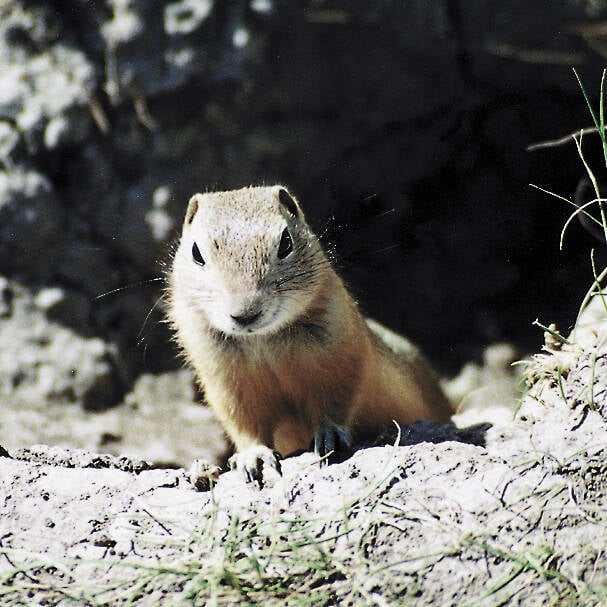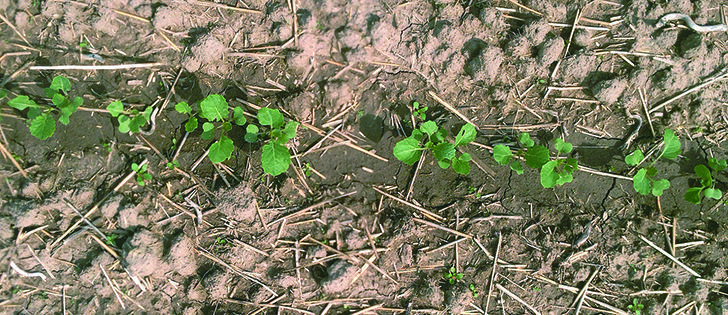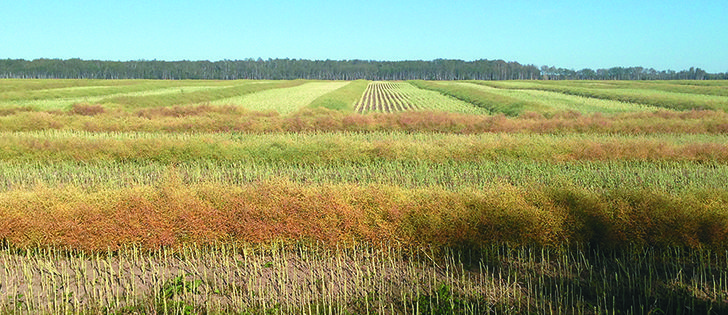And the winner is … The canola-corn planter trend continues to gain momentum, but is it as efficient as an air drill?
Canola growers who seed with a corn planter say it isn’t necessarily just about yield.
“There are other benefits to consider,” said Stephen Petluk, who used a Seed Hawk air drill and a Monosem corn planter this year to seed more than 4,000 acres of canola near Lethbridge.
Petluk compared the seeders on two similar fields, located 1 1/2 kilometres apart but with the same soil type.
“It’s not what I’d call a scientifically perfect comparison,” he said.
“The Seed Hawk has precision fertilizer placement and it was seeded one week earlier than the Monosem test field. The Monosem has no provision for fertilizer.”
Read Also

Sask. ag group wants strychnine back
The Agricultural Producers Association of Saskatchewan has written to the federal government asking for emergency use of strychnine to control gophers
He said canola fields planted with the Monosem planter looked better than those seeded with the air drill. The specific Monosem test field that matched up with the Seed Hawk test field looked perfect.
His first big surprise came when the combines hit the fields.
“On the test fields, the Seed Hawk field yielded exactly the same as the Monosem field. There was exactly zero yield benefit with the Monosem. The air drill and corn planter test fields both averaged 40 bushels,” he said.
“The planter field had looked so much better all summer. But then I have to consider that the Monosem field was planted one week later, yet it was ready to swath at the same time the Seed Hawk field was ready. So it shortened the season by a week.
“The other benefit was two pounds of seed per acre through the Monosem versus four lb. per acre through the Seed Hawk. Half the amount of seed gave me the same yield per acre.”
Petluk said these benefits occurred across his entire farm. He surmised that fields seeded with the planter had fewer plants, and therefore more space per plant, heavier stalks, bigger root systems and healthier plants.
“The germination rate through the Monosem was basically 100 percent,” he said.
“Every seed we put in the ground came up. We didn’t bounce the seed through 40 feet of air seeder hose to break up the seeds. And we never saw four plants in a cluster, three of which were weeds. Seed Hawk germination was 60 percent, if that, in some fields.”
Petluk spent $20 per acre to spray Proline on all his canola this year, doing the application with his high clearance sprayer and making sure he left check strips. Again, he was surprised.
“Proline made exactly no difference at all in the fields I seeded with the Monosem,” he said.
“The check strips yielded the same as the sprayed strips. The crop was healthy enough that it didn’t need fungicide. I wasted my time and money. Proline made a big difference in the fields seeded with the Seed Hawk. There was about a 20 percent yield boost compared to the check strips. The air drill fields had disease pressure, which the planter fields did not have.”
The opportunity to skip a fungicide application also has major implications in breaking disease cycles. Petluk said he wants to push the concept to see how far it can go.
“Now that I’ve seen what we can do with half the conventional seed rate, I want to run some plant population trials next year,” he said.
“I think we can cut the rate in half again and get down to one pound per acre. We’ll see.”
Petluk conceded that he can’t do a single pass seed and fertilizer operation with existing Monosem planter technology. The Seed Hawk has a definite advantage with its ability to precisely place all seed and fertilizer in a single pass.
It was Petluk’s first year with the 40 foot Monosem, set up with 32 row units on 15 inch row centres. He knows fertilizer is going to be a challenge, but he thinks the technology will eventually be available to deal with it. Until then, he plans to continue with both the air drill and the corn planter.
“The main thing I’m not happy about with my Seed Hawk is the on-row packing,” he said.
“It’s not good for any small light weight seeds, and it creates even more crusting problems in our clay soils. The Monosem uses firming wheels instead of actual packers. I think that’s better.”
Petluk broadcast all his fertilizer on the fields where he would be using the planter and ran over it with a Smart Till vertical till machine. Then, just before planting, he got lucky with Mother Nature and received a heavy rain to wash the fertilizer down into the root zone.
“More and more zero till farmers on heavy clay are finding their soil has a chemical imbalance,” he said.
“After some years, that clay starts to turn to concrete so no oxygen gets down to the roots. We use the Smart Till with spikes to break up the solid clay and aerate the soil. It leaves some moisture in the soil, and it lets the oxygen and water and fertilizer to get down into the root zone.”
Next year Petluk plans to install a banding system that is compatible with his Monosem. It will turn the machine into an all-in-one single-pass planter.
“I’m adding an Exactrix cart system that has both liquid and ammonia in a very narrow band, just one inch off the centre of the seed disc,” he said.
“When you combine ammonia and liquid, the mixture is less toxic to the plants and more plant-available. I’m also modifying the planter to turn it into a 70 foot machine by adding more Monosem row units. We’ll do all that work ourselves.”
Petluk said he will use only Monosem row units because the components are all stainless steel and fully grounded to reduce static electricity.
“Stay away from plastic parts and plastic discs in the metering mechanism,” he said.
“Plastic creates static electricity and that’s one thing you can’t tolerate with light weight seeds like canola. It’s a nightmare.”
Petluk was low on hydraulic power this year, so he could operate at only 4.5 m.p.h with the 40 foot planter.
“Instead of hydraulic drive, I’m going back to mechanical drive,” he said.
“We should be able to do 5.5 m.p.h next year and that will bring us up to 400 to 500 acres per day.”
Petluk said he has been averaging 4,000 to 5,000 acres of canola per year lately, but he expects more acres next year because of wheat midge.
For more information, contact Petluk at stpfarms@gmailcom.




















